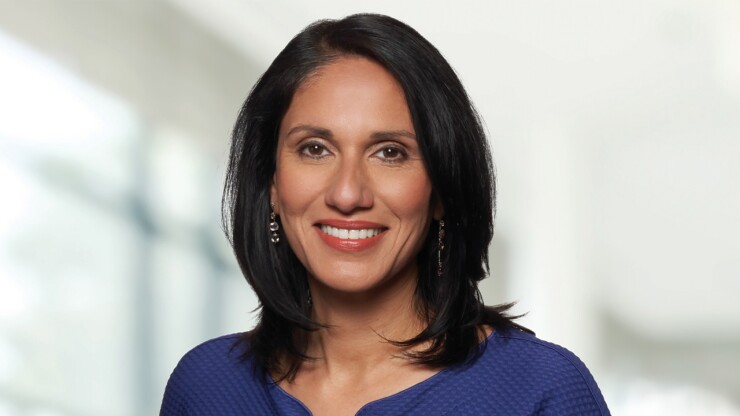- Key insights: U.S. Bank is still exploring stablecoin options outside of custody services, but sees opportunity in trade finance, CEO Gunjan Kedia said at the The Clearing House Annual Conference in New York Wednesday.
- What's at stake: While cross-border payments remain the most popular and immediate use case for stablecoins, banks with a high concentration of domestic business will need to explore other options.
- Expert quote: "There's a lot to be sorted out with stablecoin that's not super urgent, but it is consequential," Kedia said.
NEW YORK — U.S. Bank is still plotting its next move with stablecoins, but sees an opportunity to use the digital asset in trade finance, Chief Executive Gunjan Kedia said at The Clearing House Annual Conference in New York on Wednesday.
"We're in learning mode," Kedia said. "There's a lot to be sorted out with stablecoin that's not super urgent, but it is consequential."
U.S. Bank last month inked a deal with
Beyond that, the bank is still exploring which use case makes the most sense for its small-business and corporate clients, Kedia said, noting that cross-border payments – one of the most popular emerging use cases for the digital asset – wasn't the best fit for the $695 billion-asset bank.
Cross-border payments "is a corporate client conversation, by the way, it's not a small-business conversation," Kedia said. "Our business is so domestic in nature … we don't have people walking into the branch and saying, 'Hey, where's my stablecoin.'"
Kedia contrasted the lack of client demand for stablecoins to the robust demand the bank saw for Zelle.
"People wanted that capability," Kedia said. "We're just not hearing that yet," for stablecoins.
"Even the largest companies actually have negotiated away a lot of their supply chain cost. So they look at the economics and say, 'My economics are actually quite good,'" Kedia said. "It will come down to democratizing that kind of purchasing power with something like stablecoin technology."
Kedia does see an opportunity to deploy stablecoins within trade finance. "We did our first
Banks have been
Bank customers have been inquiring more frequently about digital assets, according to American Banker's On-Chain Finance report. Nearly half – 47% – of respondents said clients were asking for general information about stablecoins and cryptocurrencies, and 35% of respondents said clients were asking for the ability to make payments using cryptocurrencies.






